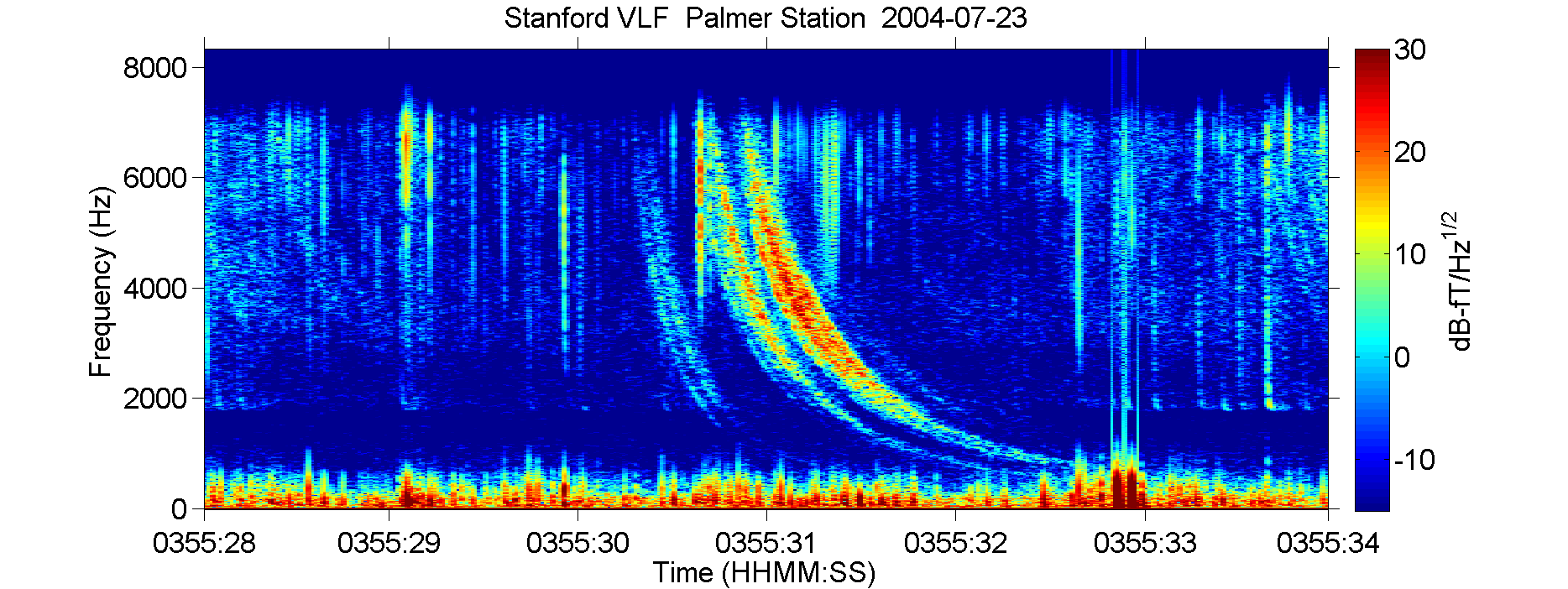Whistler spectrogram

Whistler waves are very low frequency electromagnetic waves that are generated by lightning. They are found in the ionosphere between fifty and six hundred miles above the surface of the Earth. Whistler waves are in the frequency range of one thousand cycles per second to thirty thousand cycles per second. Their maximum amplitude is usually between three thousand cycles per second to five thousand cycles per second.
The frequencies of whistler waves are about the same frequencies as human hearing. If whistler waves are converted to audio, they make a whistling sound, hence the name whistler waves. They are produced when lightning bolts generate an impulse that travels between the norther hemisphere and the southern hemisphere along the Earth’s magnetic field lines. They change in frequency as they travel which is responsible for the whistle effect.
Inside the nuclear fusion reactors called tokamaks, electric fields cause electrons to move faster and faster through the confined plasma. Usually when objects such as electrons move through a gas or a liquid, they are slowed by drag forces in the material that they are traveling through. However, in the case of a plasma, drag forces decrease with increasing velocity. This results in electron accelerating to near the speed of light. These relativistic electrons can escape the magnetic confinement and damage the container holding the plasma.
Scientists have developed several methods for dealing with these relativistic electrons. Artificial intelligence systems have been used to monitor and adjust the density of the plasma to keep electrons from going too fast. Another solution is to inject a pellet of frozen neon into the plasma to increase the density of the plasma and slow down the electrons.
It was recently discovered that whistler waves were being generated by relativistic electrons in the tokamak at the DIII-D National Fusion Facility (NFF) in San Diego. Plasmas have many modes of vibration. An electron traveling at just the right speed can cause the plasma to vibrate in one of its modes. This results in the generation of a whistler wave.
The researchers at the NFF are studying the generation of whistler waves in plasmas in the hopes of understanding exactly how the whistler waves are produced. If they can reverse engineer the process, they might be able to use antennas to artificially generate whistler waves between the walls of the tokamak and the plasma in the tokomak.
These artificial whistler waves should be able to slow down the relativistic electrons, so they do not damage the walls of the containment vessel. The researchers will need to find out exactly what frequencies and wavelengths would be most efficient in inhibiting runaway electrons and then develop the hardware necessary to produce those frequencies and wavelengths inside the tokomak.
Work on nuclear fusion has been accelerating and there are at least six companies in the U.S. alone working on small commercial nuclear fusion generators. The donut shaped tokamak discussed in this article is only one of the hardware configurations being explored for nuclear fusion reactors. It is hoped that at least one of these companies will be able to produce a commercial fusion reactor for the energy market within the next ten years.